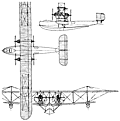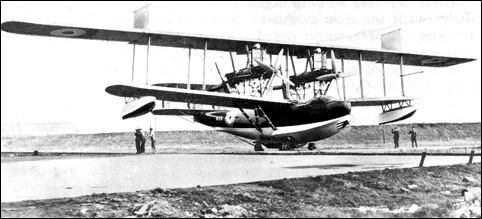|
| There is no text information for this aircraft at the moment.
 | A three-view drawing (1326 x 1338) |
| Julieta, e-mail, 18.02.2022 07:03 gangbang sqirt compilation
Famous toon facials.com
Hooker accident creampie
Cousins fuck hornbunnycom
Japanese office girl tube8
ebony feet worship
Amateur housewife squirts
Short haired floozy drtuber
arab beurette avec un black
Haruna uncensored free drtuber reply | | Sven, 17.01.2013 22:16 Terrence . Estimate both wings = 250 feet X chord of 11 feet. Just a rough guess but sounds about right to me. 115mph top speed! Now that would sort the men from the boys. Shame none of us will ever know what 4 condours sound like. reply | | Terrence Murphy, e-mail, 17.01.2013 16:45 Wait, that wing area can't be right. 2900 sq ft? It has to be 290 sq ft. reply | | Terrence I. Murphy, e-mail, 10.02.2012 01:45 The Fairey N.4 was a 1920s British five-seat long range reconnaissance flying boat. Designed and built by the Fairey Aviation Company to meet an Admiralty requirement for a very large four-engined reconnaissance aircraft, it was the world's biggest flying boat when it first flew in 1923.
The first N.4 (named Atalanta) first flew in 1923 powered by four 650 hp (485 kW) Rolls-Royce Condor IA piston engines. The hull had been built in Southampton (by boat builders) and delivered to Lytham St. Annes for assembly and the complete aircraft was then dismantled and taken by road to the Isle of Grain for its first flight.
The second N.4 Mk II (named Titania) included improvements and later variant Condor III engines. Titania was not flown straight away and was stored, not flying until 1925.
General characteristics
� Crew: 5
� Length: 60 ft 0 in (20.12 m)
� Wingspan: 139 ft 0 in (42.37 m)
� Wing area: 2900 ft2 (269.41 m2)
� Gross weight: 31612 lb (14339 kg)
� Powerplant: 4 � Rolls-Royce Condor III Vee piston engine, 650 hp (485 kW) each
Performance
� Maximum speed: 115 mph (185 km /h)
� Endurance: 9 hours 0 min
� Service ceiling: 14,100 ft (4300 m)
Armament
� 0.303in (7.7mm) Lewis machine-gun (in nose and beam positions)
� 1000lb (454kg) of bombs reply | |
| | Terrence I. Murphy, e-mail, 10.02.2012 01:45 The Fairey N.4 was a 1920s British five-seat long range reconnaissance flying boat. Designed and built by the Fairey Aviation Company to meet an Admiralty requirement for a very large four-engined reconnaissance aircraft, it was the world's biggest flying boat when it first flew in 1923.
The first N.4 (named Atalanta) first flew in 1923 powered by four 650 hp (485 kW) Rolls-Royce Condor IA piston engines. The hull had been built in Southampton (by boat builders) and delivered to Lytham St. Annes for assembly and the complete aircraft was then dismantled and taken by road to the Isle of Grain for its first flight.
The second N.4 Mk II (named Titania) included improvements and later variant Condor III engines. Titania was not flown straight away and was stored, not flying until 1925.
General characteristics
� Crew: 5
� Length: 60 ft 0 in (20.12 m)
� Wingspan: 139 ft 0 in (42.37 m)
� Wing area: 2900 ft2 (269.41 m2)
� Gross weight: 31612 lb (14339 kg)
� Powerplant: 4 � Rolls-Royce Condor III Vee piston engine, 650 hp (485 kW) each
Performance
� Maximum speed: 115 mph (185 km /h)
� Endurance: 9 hours 0 min
� Service ceiling: 14,100 ft (4300 m)
Armament
� 0.303in (7.7mm) Lewis machine-gun (in nose and beam positions)
� 1000lb (454kg) of bombs reply |
|
Do you have any comments?
|
| 
COMPANY
PROFILE
All the World's Rotorcraft
|












e
reply